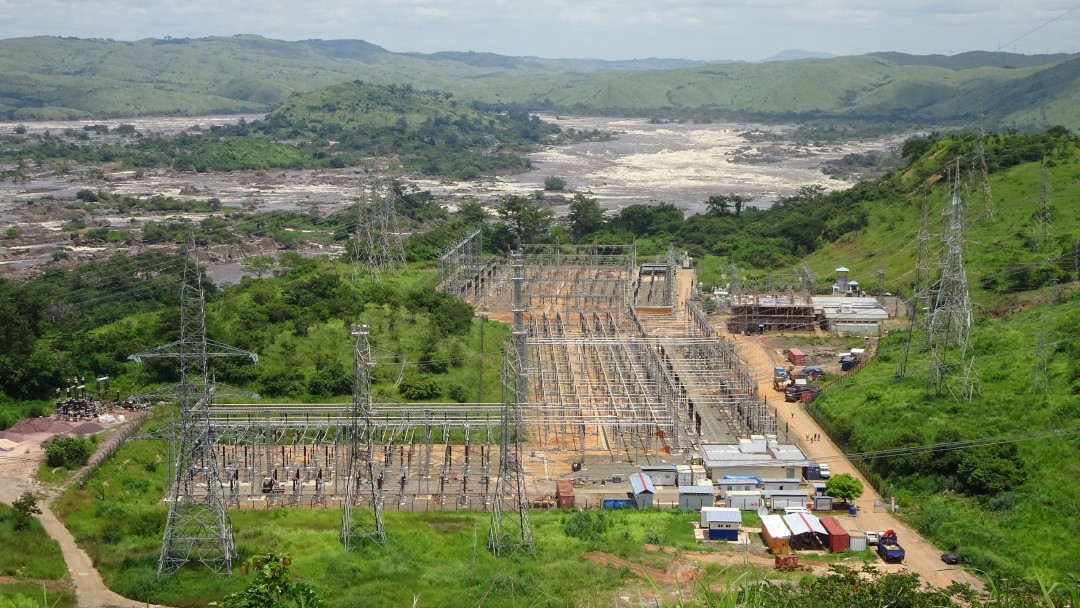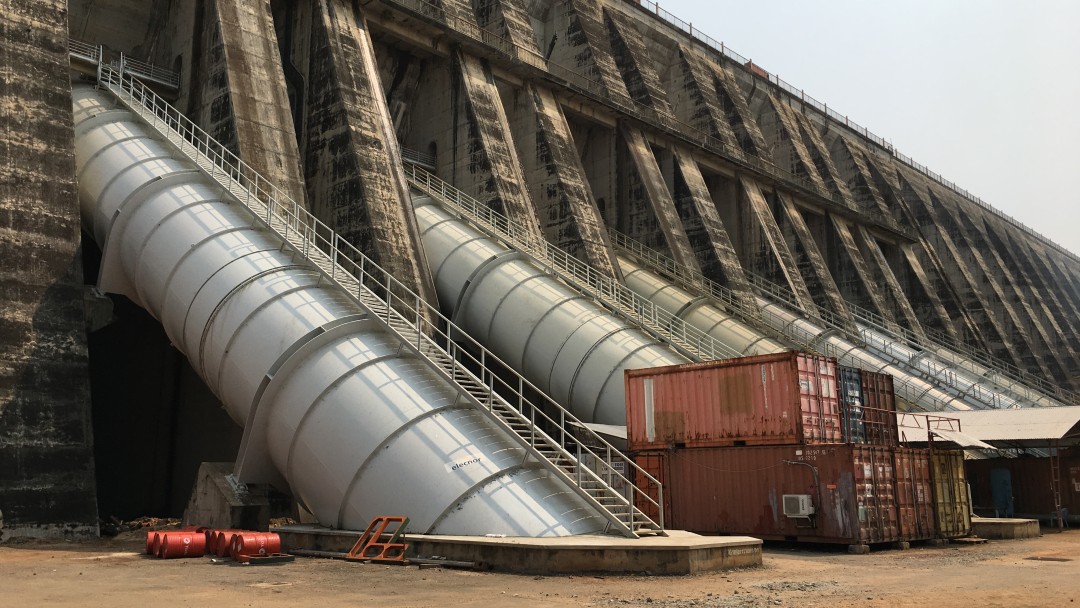News from 2024-09-30 / KfW Development Bank
Reliable electricity supply thanks to digitalisation
KfW has financed the modernisation of a substation in the DRC

The electricity supply in the Democratic Republic of the Congo is unreliable and does not cover demand. The energy from the two largest hydropower plants on the Congo River was not being fully utilised, despite the fact they have been modernised. The reason for this was an outdated substation. On behalf of the German Federal Government, KfW has financed the rehabilitation of the substation by the state energy supplier SNEL. This will help make the electricity supply in the DRC more stable, more efficient, more cost-effective and more environmentally friendly. The control system was also digitalised, making it fit for the future.
Electricity is a luxury in the Democratic Republic of the Congo (DRC) and is not available to the majority of the population; fewer than one in five residents draws electricity from the socket. Most have to use expensive diesel generators or do without power. Of the country’s roughly eighteen million households, only two million have access to electricity at all, with major variation between urban and rural areas. This not only complicates living conditions, but also economic development. Power outages due to damage or overload hinder business operations.
Great potential for green electricity
The DRC has great potential for a sustainable energy supply, namely from hydropower. Two power plants on the Congo River, with installed capacity of more than 1.7 gigawatts, are the country’s main energy suppliers – they alone generate 90% of the electricity consumed in the capital Kinshasa. These two run-of-river power plants Inga I and II are integrated into dams on the mighty Congo River, where it overcomes a drop of more than 90 metres.

The two power plants are located in the west of the DRC, but in addition to the capital Kinshasa with its 16 million inhabitants, they also supply the south of the country via a high-voltage power line that is more than 1,000 km long. The most important consumers in economic terms are industrial companies, which in this way are supplied with green electricity. A substation provides the high voltage required to transmit the power over the vast distances. In addition, the switchgear protects the power grid in the event of lightning strikes, short circuits or line failure. Yet the outdated station was in a poor condition – one of the causes of the frequent power outages. The energy generated in the hydropower plants was not being fully utilised, and power losses were high.
Modernisation while still running
KfW has provided EUR 20 million to finance the modernisation of the substation for the energy from the Inga I and Inga II hydropower plants, on behalf of the Federal Ministry for Economic Cooperation and Development (BMZ). Another EUR 4 million was allocated to connect four turbines at the hydroelectric power plant to the new, modern switchgear control system. The Kinshasa control centre now has direct access to Inga II’s substation. Faults are detected and corrected early, thereby stabilising the entire power grid and minimising energy losses.
The challenge in modernising the substation was that only individual parts of the plant could be shut down while the plant was still operating. This meant that the different areas had to be modernised bit by bit, which made work more difficult. The modernisation of the substation and control equipment was also delayed due to work restrictions and supply problems during the COVID-19 pandemic. However, work concluded successfully this year with the integration of the four generating units.
Reliable supply
“By modernising the substation, we have made an important contribution to making the electricity supply in the Congo more secure,” said KfW expert Markus Schlömann. “Electricity distribution is often undervalued, but it is just as important for the supply as the electricity generation itself.” The new substation ensures that the electricity from the two hydropower plants reliably reaches consumers, which significantly improves the living situation and facilitates economic development. The two Inga hydropower plants therefore make a significant contribution to the country’s electricity supply, although demand is still not fully met. For this reason, the World Bank is considering further expansion of the Inga power plants.

Share page
To share the content of this page with your network, click on one of the icons below.
Note on data protection: When you share content, your personal data is transferred to the selected network.
Data protection
Alternatively, you can also copy the short link: https://www.kfw-entwicklungsbank.de/s/enzBWrMC.DJGA
Copy link Link copied